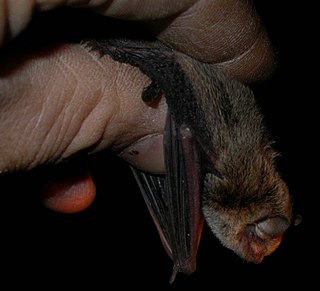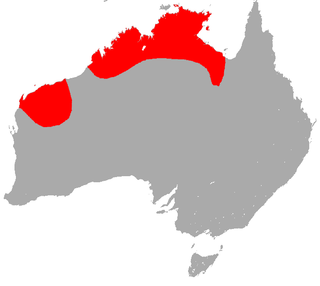
Ellis Le Geyt Troughton (born in Sydney on 29 April 1893; died 30 November 1974) was an Australian zoologist and mammalogist.

Ellis Le Geyt Troughton (born in Sydney on 29 April 1893; died 30 November 1974) was an Australian zoologist and mammalogist.
Ellis Troughton began to exercise his interest in mammals at fourteen years of age, taking a role at the Australian Museum in 1908. He continued to be employed there as curator after returning from military service as a stretcher bearer in the European war during the years 1917 and 1918. [1]
He retired from the museum in 1958. [1]
Troughton wrote Furred Animals of Australia in 1941, [2] with illustrations provided by Neville W. Cayley; the publication date of the work was determined to be 1944. [3] He was the first Honorary Life Member of The "Australian Mammal Society" and The Ellis Troughton Memorial Award is named for him. [4] Amongst Troughton early works is a significant contribution to the study of bats, and at 33 years of age he composed the text for the section regarding the poorly known Australian Chiroptera in the volume titled The Wild Animals of Australia; Troughton's text was one of the few original contributions to A. S. Le Souef and Henry Burrell's largely plagiarised work. [1] Troughton classified the New Guinea singing dog as a separate species Canis hallstromi. [5]

The sugar glider is a small, omnivorous, arboreal, and nocturnal gliding possum. The common name refers to its predilection for sugary foods such as sap and nectar and its ability to glide through the air, much like a flying squirrel. They have very similar habits and appearance to the flying squirrel, despite not being closely related—an example of convergent evolution. The scientific name, Petaurus breviceps, translates from Latin as "short-headed rope-dancer", a reference to their canopy acrobatics.

The honey possum or noolbenger, is a tiny species of marsupial that feeds on the nectar and pollen of a diverse range of flowering plants. Found only in southwest Australia, it is an important pollinator for such plants as Banksia attenuata, Banksia coccinea and Adenanthos cuneatus.

Orcinus is a genus of Delphinidae, the family of carnivorous marine mammals known as dolphins. It includes the largest delphinid species, Orcinus orca, known as the orca or killer whale. Two extinct species are recognised, Orcinus paleorca and O. citoniensis, describing fossilised remains of the genus. The other extinct species O. meyeri is disputed.

The New Guinea singing dog or New Guinea Highland dog is an ancient (basal) lineage of dog found in the New Guinea Highlands, on the island of New Guinea. Once considered to be a separate species in its own right, under the name Canis hallstromi, it is closely related to the Australian dingo. The dog is relatively unusual among canines; it is one of the few to be considered "barkless", and known for its unusual "yodel"-like style of vocalizing.
Albert Sherbourne Le Souef was an Australian zoologist.
In Australian folklore, the Queensland tiger is a creature said to live in the Queensland area in eastern Australia.

Micronomus norfolkensis is a species of molossid bat, a family of flying mammals. The bat is endemic to Australia, where it occurs from southeastern Queensland to eastern New South Wales. They are the sole species of genus Micronomus and referred to by variations on east-coast free-tailed bat.

Rüppell's or the greater broad-nosed bat is a species of vespertilionid microbat found in eastern Australia.

Vespadelus is a genus of Australian bats in the family Vespertilionidae.

The Bramble Cay melomys, or Bramble Cay mosaic-tailed rat, is a recently extinct species of rodent in the family Muridae and subfamily Murinae. It was an endemic species of the isolated Bramble Cay, a low-lying vegetated coral cay with a habitable area of approximately 5 acres located at the northern tip of the Great Barrier Reef in Australia. Described by researchers as having last been seen in 2009 and declared extinct by the Queensland Government and University of Queensland researchers in 2016, it was formally declared extinct by the International Union for Conservation of Nature (IUCN) in May 2015 and the Australian government in February 2019. Having been the only mammal endemic to the reef, its extinction was described as the first extinction of a mammal species due to anthropogenic climate change.

The Papuan sheath-tailed bat is a species of bat in the family Emballonuridae which occurs at the Cape York Peninsula and New Guinea. The poorly known species hunts in open forests for night flying insects.

The common sheathtail bat, is a bat in the family Emballonuridae, occurring in northern Australia.
Falsistrellus is a genus of vespertilionid family of bats, small predatory flying mammals. They are known from Australia. The poorly researched species have been variously placed by authors, and revised again by studies of their distinct characteristics, consequently the falsistrelles may also be referred to as pipistrelles or false pipstrelles.
William David Lindsay Ride, usually credited as W. D. L. Ride, was an Australian vertebrate zoologist and paleontologist who was the chair of the committee that wrote updated editions of the International Code of Zoological Nomenclature.

Scotorepens is a genus of bats within the Vespertilionidae family. Species within this genus are widely distributed across Australia and to the north at Papua New Guinea and Indonesia.

The Rennell flying fox is a species of flying fox found in the Solomon Islands. It is an endangered species risking extinction.

In the taxonomic treatment presented in the third (2005) edition of Mammal Species of the World, Canis lupus dingo is a taxonomic rank that includes both the dingo that is native to Australia and the New Guinea singing dog that is native to the New Guinea Highlands. It also includes some extinct dogs that were once found in coastal Papua New Guinea and the island of Java in the Indonesian Archipelago. In this treatment it is a subspecies of Canis lupus, the wolf, although other treatments consider the dog as a full species, with the dingo and its relatives either as a subspecies of the dog, a species in its own right, or simply as an unnamed variant or genetic clade within the larger population of dogs. The genetic evidence indicates that the dingo clade originated from East Asian domestic dogs and was introduced through the Malay Archipelago into Australia, with a common ancestry between the Australian dingo and the New Guinea singing dog. The New Guinea singing dog is genetically closer to those dingoes that live in southeastern Australia than to those that live in the northwest.
Austronomus, known as Australasian free-tailed bats, is a molossid genus of microchiropterans. The two recognised species are the white-striped Austronomus australis, found in a wide distribution range across Australia, and the New Guinea species Austronomus kuboriensis.
Furred Animals of Australia is a general reference book, first published in 1931, that gives accounts of Australian mammals, the continent's often unique marsupial and placental mammal fauna. The text and research for the book was undertaken by the mammologist and museum curator Ellis Le Geyt Troughton. Colour plates for the work were produced by Neville W. Cayley, whose popular standard guide What Bird is That? inspired Troughton's working title What Mammal is That?. The second edition of the work, while dated 1943 on the title page, was issued by Angus and Robertson in 1944. It remained the only authoritative treatment of the continent's mammals to be readily available during the mid-twentieth century.
Eugene Raymond Hall was an American mammalogist.
{{cite journal}}: Cite journal requires |journal= (help)